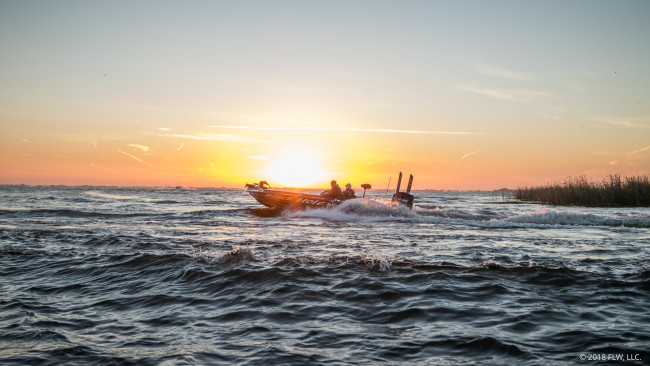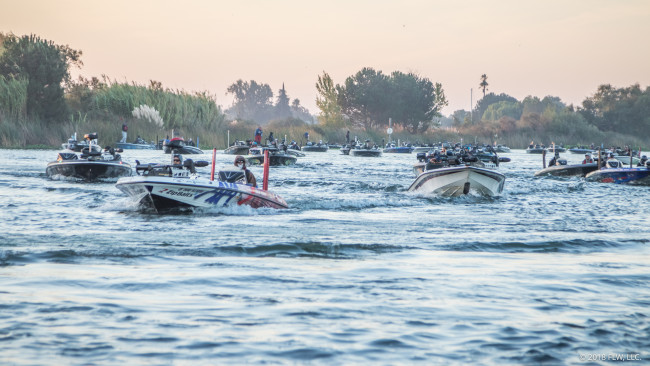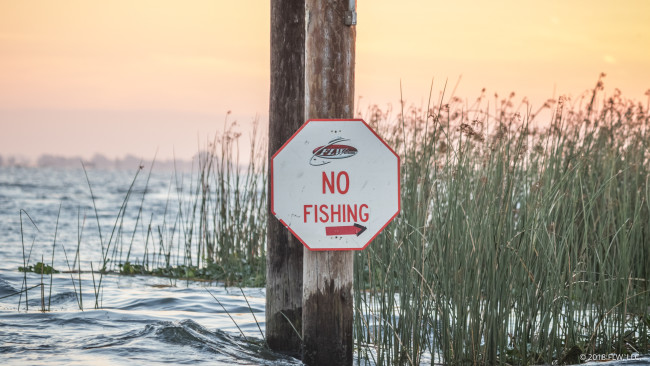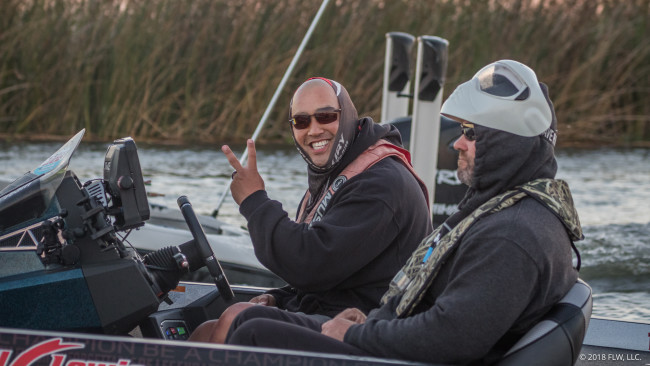Promising Tides on Tap at the Cal Delta
Difficult conditions offset by good timing mean it’s anyone’s game out West

It’s kind of a good news-bad news deal on the California Delta this week as anglers take on this vast and storied fishery for the final event of the Costa FLW Series Western Division.
The good news: an ideal tidal scenario. The bad news: extremely tough fishing.
As the division’s finale plays out in an event that is presented by Power-Pole and hosted by Russo’s Marina and Sugar Barge RV Resort & Marina, pros will compete for a top award of up to $50,000 in cash and a new Ranger Z518C boat with a 200-hp Evinrude outboard. Co-anglers will cast for a Ranger Z175 boat with a 90-hp Evinrude outboard and an additional $5,000 if Ranger Cup qualified.

About the fishery
Covering approximately 1,100 square miles, the Delta drains California’s Central Valley with a massive network of sloughs and canals feeding into the confluence of the Sacramento and San Joaquin rivers. Principal habitat features include tule berms, submerged vegetation, weed mats (hyacinth, pennywort, primrose, etc.), riprap and shallow wood.
With the major rivers flowing into Suison Bay, which links via the Carquinez Strait to San Francisco Bay, the Cal Delta feels the effects of Pacific tides. Daily ebb and flow position fish and forage, while often influencing navigational access to the shallower areas.
Herbicide treatments have killed off a lot of the hydrilla that normally blankets riprap banks, weaves into tule patches and skirts most hyacinth mats. This year, the grass is far more scattered, so finding isolated patches, especially next to another dominant habitat feature, can be golden.

Current conditions
California pro Vince Hurtado says that during the two and a half weeks he has been practicing, he’s found visibility of 3 to 4 feet throughout much of the Delta. Fellow Golden State pro Ken Mah has also seen extreme clarity in much of the region, but notes the north and east reaches have been the clearest.
“It becomes more tannic, kind of a clear brown color in the south, and it’s kind of a stained green color in the west,” Mah says.
Clear water makes for spooky fish, but it’s going to help in the sense of spotting the grass that’s in short supply right now. Conversely, stained water might produce better reaction bites.
As for water flow, fortunes are won and lost on Delta tides, but this week anglers are fortunate to start each day on the high. That means they’ll fish the preferred outgoing cycle, which tends to stimulate feeding by flushing baitfish out of backwaters, and it should concentrate bass in more predictable feeding positions.
Day one will include a brief window of incoming water, once the tide turns in the afternoon. However, because tidal changes advance about an hour each day, the incoming cycle will start too late for most of the field to worry about it on days two and three.
Today should also see sunny, stable conditions with a daytime high around 94 degrees. However, the forecast calls for a temperature drop of about 12 degrees on day two and another, lesser drop on day three. Westerly winds will remain light for the first day, but the second and third could see 10 to 20 mph winds.
“There’s going to be a mix of weather, and if guys are not planning for it they’re going to be in trouble,” Hurtado says. “They’re going to have to adapt to those conditions.
“The fishing isn’t what it normally is, and planning is going to be critical. This is going to be the game changer.”
Tactics in play
Hurtado says a key component for him will be looking for grass that has been unaffected by recent herbicide treatments.
“I think that 50 percent of the field will be fishing tules and rock [riprap] because it’s visible,” Hurtado says. “But I really believe the people who do well are going to be focusing on stuff that they can’t see. That’s going to be the key.
“They’re spraying the banks, but they’re not spraying 50 yards from the bank. So those fish are still in the area. They’re just not on the bank.”
Hurtado says he expects drop-shots and Yamamoto Senkos (wacky-rigged and unweighted) to play big roles this week, but moving baits such as bladed jigs, spinnerbaits, crankbaits and topwaters will also produce. Mah adds swimbaits and punching baits.

Critical factors
- Finding grass – Submerged vegetation still exists throughout the Delta, but it’s not as obvious and easy to target as normal. The good thing is that finding a few good stretches along a riprap bank or tucked amid scattered tules could mean encountering clusters of fish and a potentially fast-paced rally.
- Finding kickers – Limits won’t come easy, but finding five keepers should be within reach for most pros. The challenge will be finding those quality fish of 5 or more pounds. This is still the Cal Delta, so 10-pounders are never out of the equation, but anything even close to that will be a real gift this week. “I think you’re going to see a lot of limits, but you’re going to see a lot of uncharacteristically small limits for the Delta,” Mah adds. “Quality is going to be a premium. In years past, it was about who was going to get the two or three big bites each day, but in this event it may come down to who gets one or two big bites throughout the entire event.”
- Wind woes – The Delta’s labyrinthine layout offers plenty of leeward banks, but crossing large open areas such as Frank’s Tract, Big Break and the major rivers could become tricky when big winds blow. This could limit where some anglers feel comfortable running and ultimately stack more boats into the protected areas.

Dock talk
“I think executing on those 3 1/2-pound and larger fish will be critical,” Mah says. “There’s just not as many of those caliber fish biting. For me, it’s about making good decisions and then capitalizing on the moment when you get the fish to bite.”
Arizona standout Joe Uribe Jr. says he’s taking a conservative approach to this event. Notably, he and his sister, Rachel Uribe, lead the Western Division’s pro and co-angler points standings, respectively.
“We’re just going to try and catch those 2 1/2- to 3-pounders all day long,” Joe says. “A lot of guys are going to be looking for the needle in the haystack, and they might find it, but they may not have anything to back it up with.”
On the other hand, should the stars align, some fortunate angler could set an early pace that might become increasingly difficult to overtake.
“The angler who weighs a big sack on day one is going to literally control his destiny, because we don’t know what’s going to happen on day two and day three,” Hurtado says. “I anticipate that 15 3/4 pounds will make the top-10 cut. I think anyone that weighs 17 1/2 to 18 pounds a day is going to walk away with the trophy.”
Tournament details
Dates: Sept. 27-29, 2018
Format: All boaters and co-anglers will compete for two days. The top 10 boaters and co-anglers based on cumulative weight after two days of competition will advance to the third and final round, with the winner in each category determined by the heaviest cumulative three-day weight.
Takeoff time: 7 a.m. PT
Takeoff location: Russo’s Marina, 3995 Willow Road, Bethel Island, CA
Weigh-in time: 3 p.m. PT
Weigh-in location: Russo’s Marina